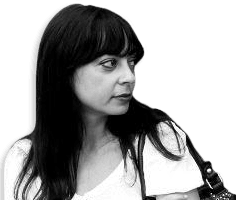Blogger “Khaterat Daheye Shast" (Memories From The '80s) writes about a controversial fountain in Tehran:
In the early years of the 1980-1988 war with Iraq, a pond with several sections was built near an area dedicated to martyrs at the Beheshte Zahra graveyard in Tehran. Its fountain spurted blood. It became known as the "Pond of Blood." Obviously, it was not actual blood but only red coloring mixed in the water.
The fame of this pond even reached overseas, to the point that foreign journalists would strive to take pictures of it.
Once, the Iranian daily“Etelaat” published a special issue about the war with a picture of the fountain on the cover, with a caption consisting of a saying by Imam Khomeini: "All in all, our revolution was a blessing."
The publication of that picture with that caption provoked the rage of the Hizbullahi fellows and protests began. The forces of the Revolutionary Guards were sent to the newspaper's offices to arrest and punish those behind the publication. In the end, the matter was solved by the dismissal of a few "Etelaat" employees and an apology from the head of the newspaper.
The construction of the pond, which had a symbolic and propaganda value, proved to be more painful to the families of the martyrs than to Iran's enemies. Hence, the bloody water was removed and now normal water flows in it.
In the early years of the 1980-1988 war with Iraq, a pond with several sections was built near an area dedicated to martyrs at the Beheshte Zahra graveyard in Tehran. Its fountain spurted blood. It became known as the "Pond of Blood." Obviously, it was not actual blood but only red coloring mixed in the water.
The fame of this pond even reached overseas, to the point that foreign journalists would strive to take pictures of it.
Once, the Iranian daily“Etelaat” published a special issue about the war with a picture of the fountain on the cover, with a caption consisting of a saying by Imam Khomeini: "All in all, our revolution was a blessing."
The publication of that picture with that caption provoked the rage of the Hizbullahi fellows and protests began. The forces of the Revolutionary Guards were sent to the newspaper's offices to arrest and punish those behind the publication. In the end, the matter was solved by the dismissal of a few "Etelaat" employees and an apology from the head of the newspaper.
The construction of the pond, which had a symbolic and propaganda value, proved to be more painful to the families of the martyrs than to Iran's enemies. Hence, the bloody water was removed and now normal water flows in it.





